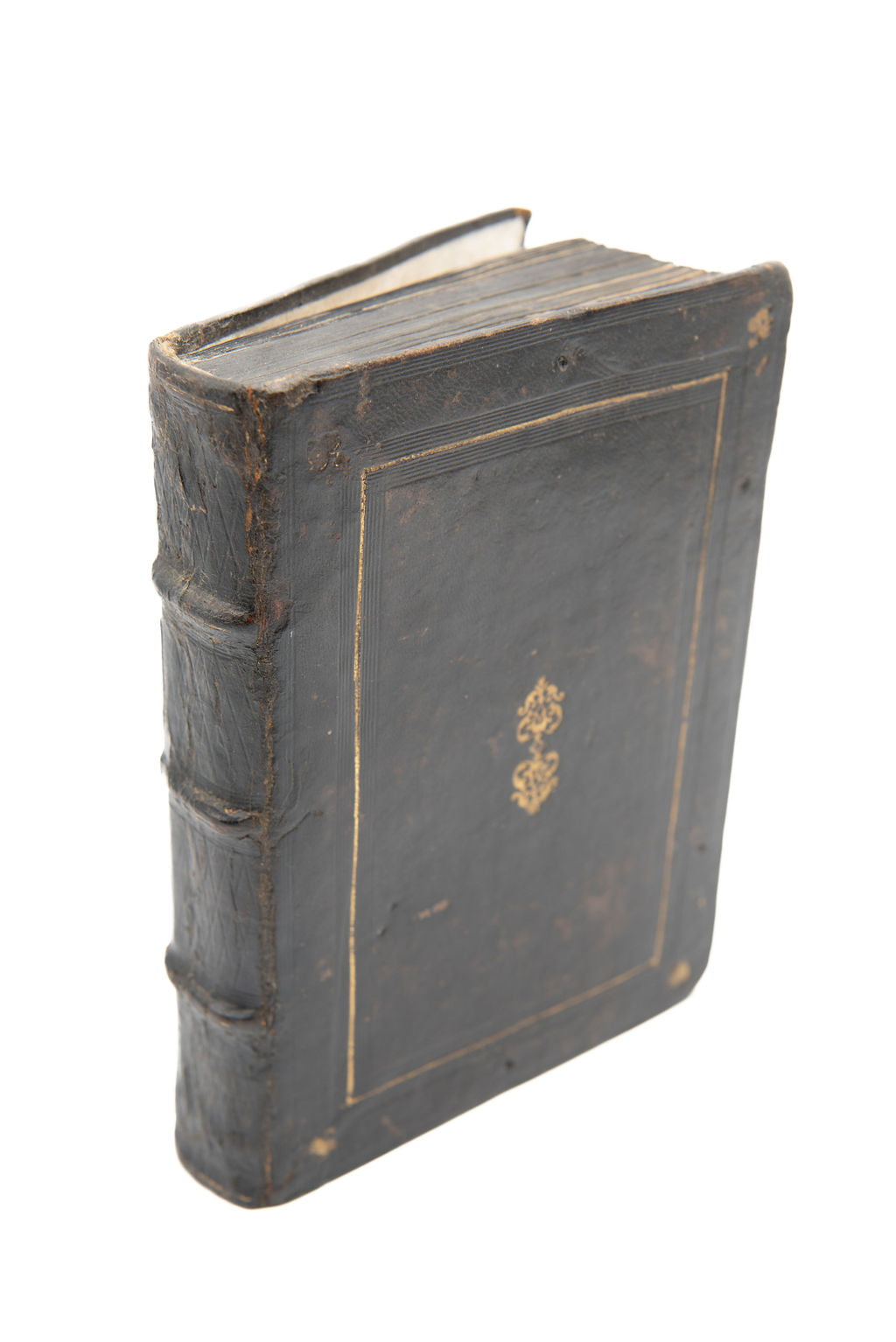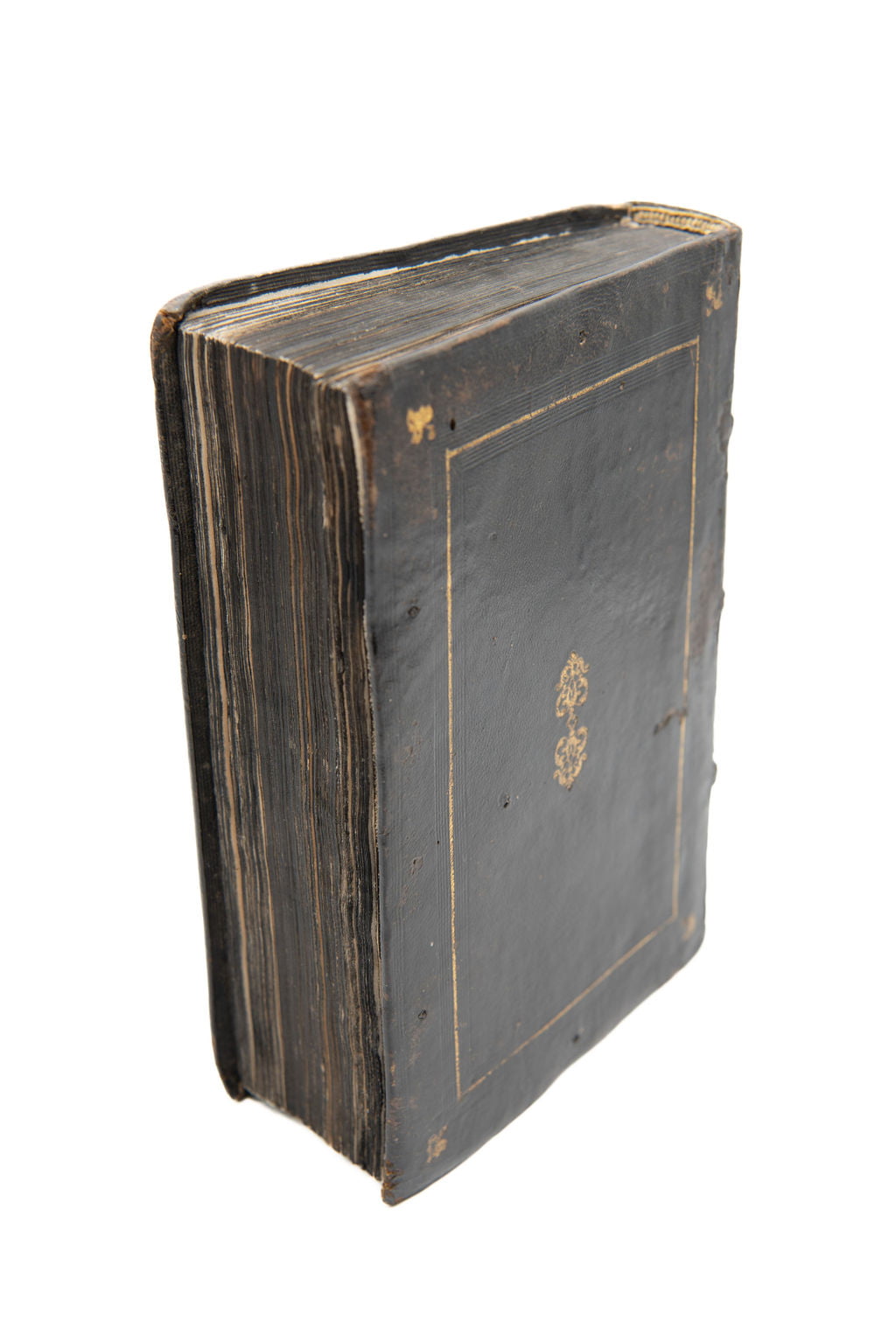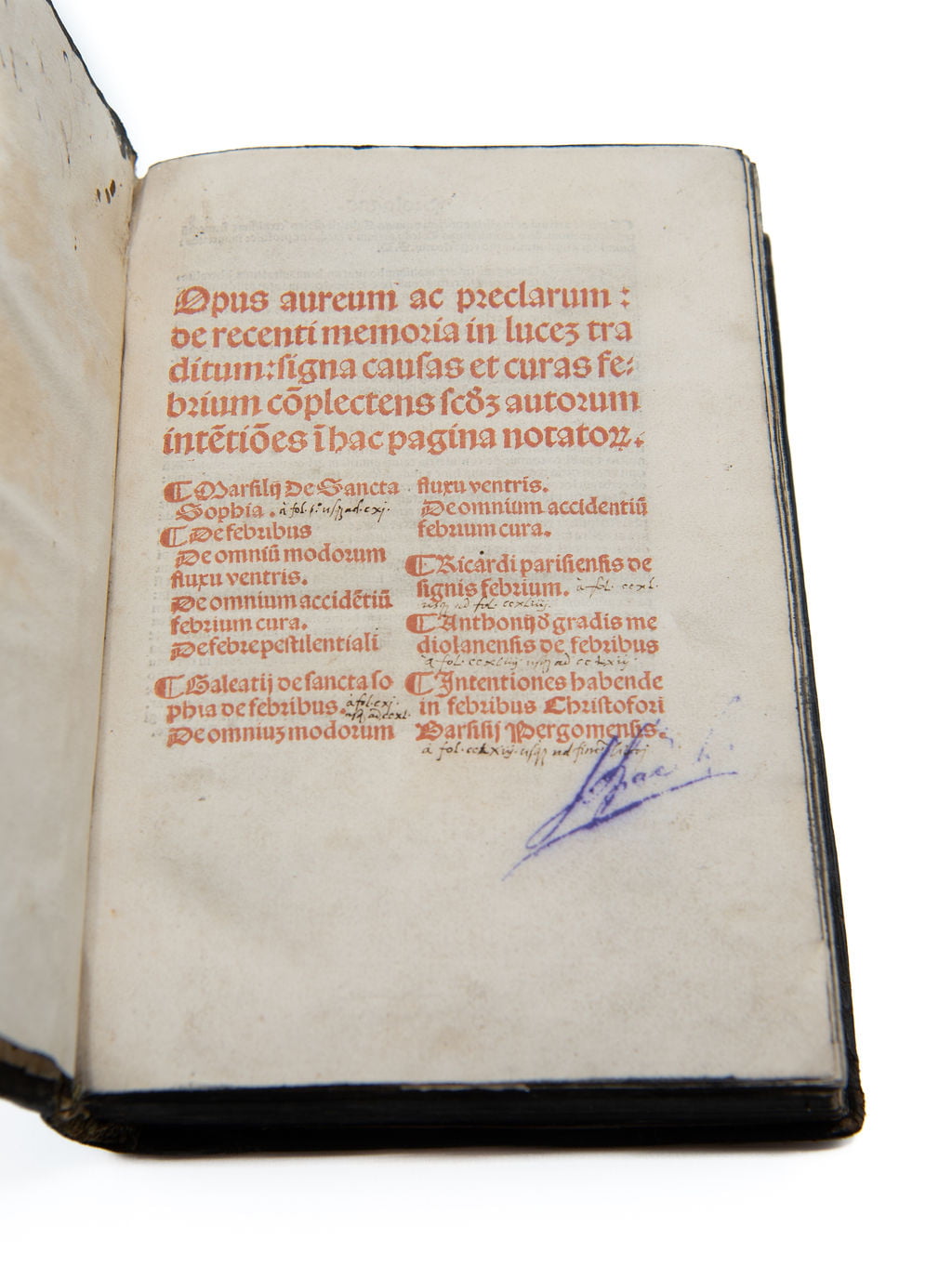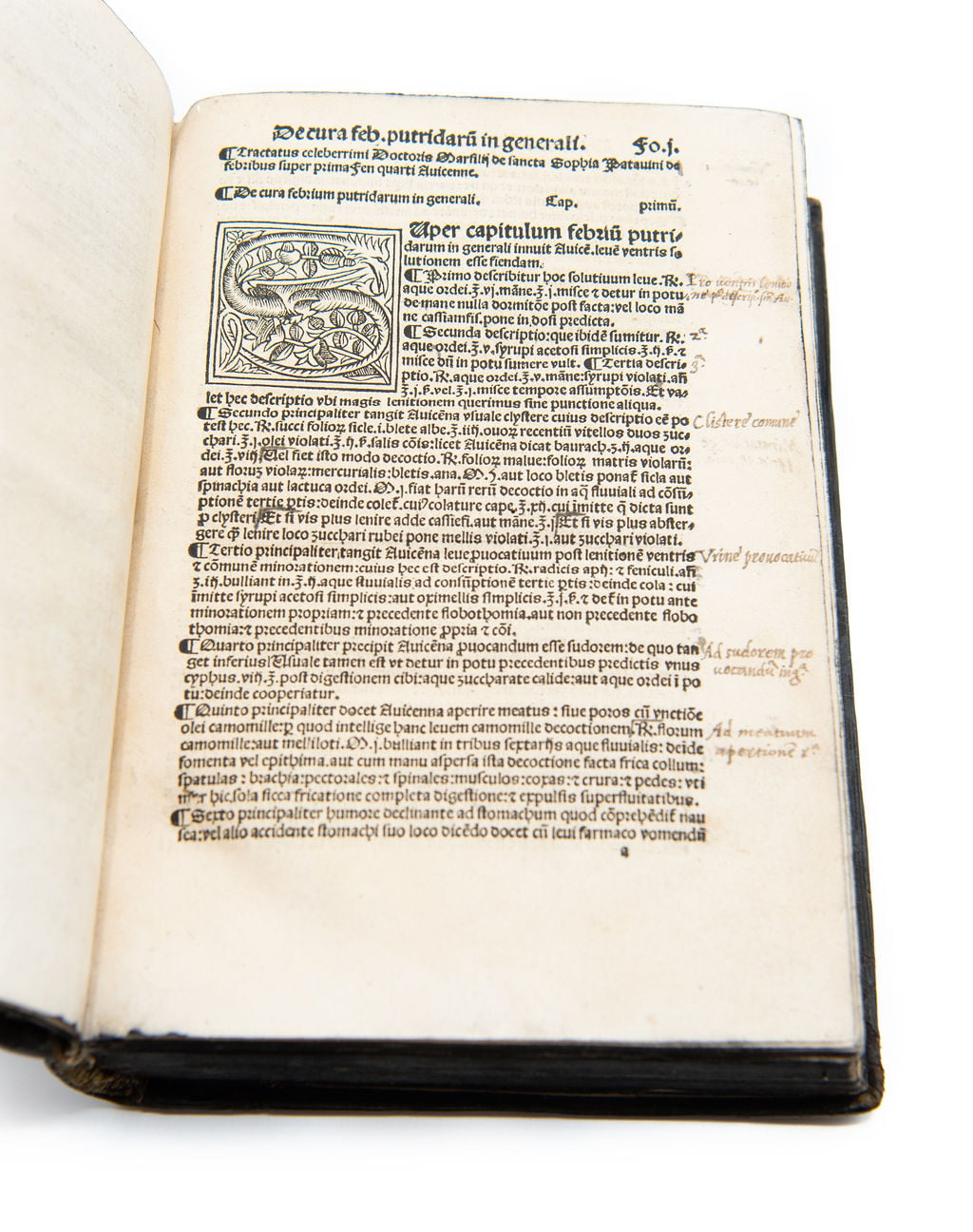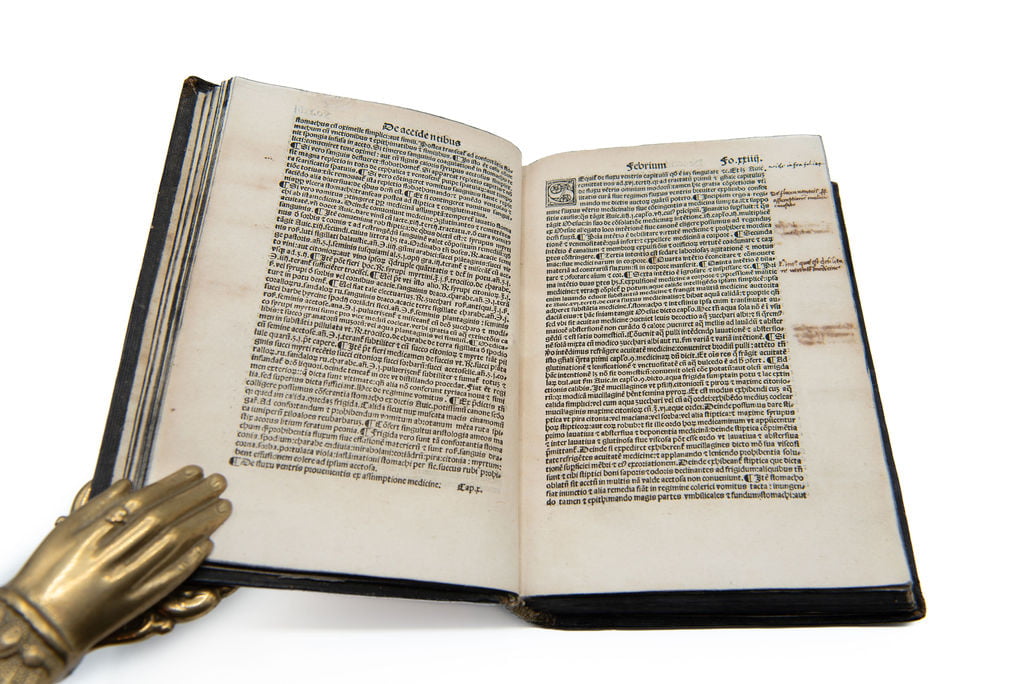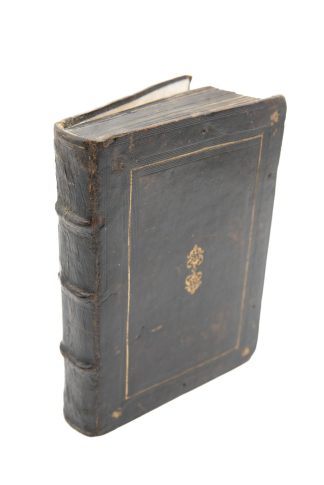SANTA SOFIA, Marsilio, SANTA SOFIA, Galeazzo, PARISIENSIS, Richardus, DE GRADI, Antonio and BARZIZZA, Cristoforo.
ONE COPY RECORDED IN US
Opus aureum […] signa, causa et curas febrium
Lyon, n.p., 1517£9,750.00
4to, ff. (iv) 263 (xiii). Gothic letter, typographical ornaments, woodcut floriated initials. T-p in red, mostly light age browning, last two gatherings somewhat stained mainly to margins, minor repaired tear to blank outer margin of 5 ll. (just touching a few ms. marginalia), very small adhesion to two ll. affecting 4 words, some contemporary Latin marginalia. A good, well margined copy in contemporary Italian dark goatskin, covers blind and gilt ruled to a panel design, gilt ivy leaves to corners and ornated centrepiece, spine with raised bands, cross-hatched blind stamped decoration in compartments, spine and joints repaired, missing ties, a.e. black. C19 ms. ex libris ‘Ex Bibl: Casnacich’ to fly, faded purple autograph stamp to lower margin of t-p, early ink manuscript references to text.
A very good copy of this rare collection of treatises on fevers, their causes and treatment, one in its FIRST EDITION. This is the second and enlarged edition of the collection, by Michel de Capella (first 1514). The decoration of the fine contemporary Italian binding – elegant and simple, with a single gilt rule border, delicate blind lines and ‘aldine’ leaves to corners – is typical of the Venetian bindings of the period (see De Marinis II, pl. cccxxxiii). In particular, the style is close to Aldine bindings made by Andrea di Lorenzo, or “Mendoza Binder” (Venice, c. 1518-1555), and a similar example with black edges is recorded by Davis (The Henry Davis Gift n. 261).
The first two essays are by members of the renowned family of physicians ‘de Santa Sofia’, of Padua. Marsilio (c. 1338-1405), was the most illustrious: after graduating, he taught logic and medicine in Padua from 1367 to 1381; later, he became physician to Gian Galeazzo Visconti, first duke of Milan. He dedicated his life to teaching and writing medical commentaries. His ‘De febribus’, first published in 1507, deals with all the symptoms of fever and how to treat them, then presents a series of different types of fever, including tertian and quartan, and the ‘febris pestilentialis’, a term which often referred to plague. Interestingly, Marsilio worked in Venice in 1393, when an episode of plague broke out in the city. Galeazzo (d. 1427) was Marsilio’s nephew, who, after teaching medicine in Padova and Bologna, moved to Vienna as physician to Albert IV, duke of Austria. His treatise on fevers (first ed. 1514) is in two parts, the first concerns fever in general, how to treat acute fever, and it presents a series of ‘regimina’, or therapies to cure various symptoms; the second deals with the different fevers, including ‘febris pestilentialis’, ‘febris colericis’ and ‘febris flegmatice’.
The third treatise in the collection by Richardus Parisiensis, specifically focuses on fever’s symptoms (signa). The author of the fourth treatise is Antonio de Gradi (fl.1458), a Milanese doctor mostly known for this particular essay on fevers. The last work, printed here for the first time, is by Cristoforo Barzizza (d. c. 1445). A native of Bergamo, he was a distinguished physician and a colleague of Galeazzo de Santa Sofia at the University of Padua. His ‘de intentionibus habendis in omni febre’ (here) considers synochal, syncopal, pestilential, quartan, quintan fevers, but also small pox and measles. Compared to the others, Barzizza devotes less attention to describing the symptoms of the illness and focuses more on treatment and cure.
The manuscript ex libris most likely belongs to the Croatian physician and writer Ivan August Kaznačić (1817-1883), director of the Dubrovnik hospital for twenty years, literary critic and bibliographer.
USTC 144786; Durling 2972; Wellcome I, 5750. Not in BM STC Fr. 16th century, Adams, Brunet, Graesse, Garrison-Morton or Stillwell. USTC and Worldcat record no copies in the US.In stock


